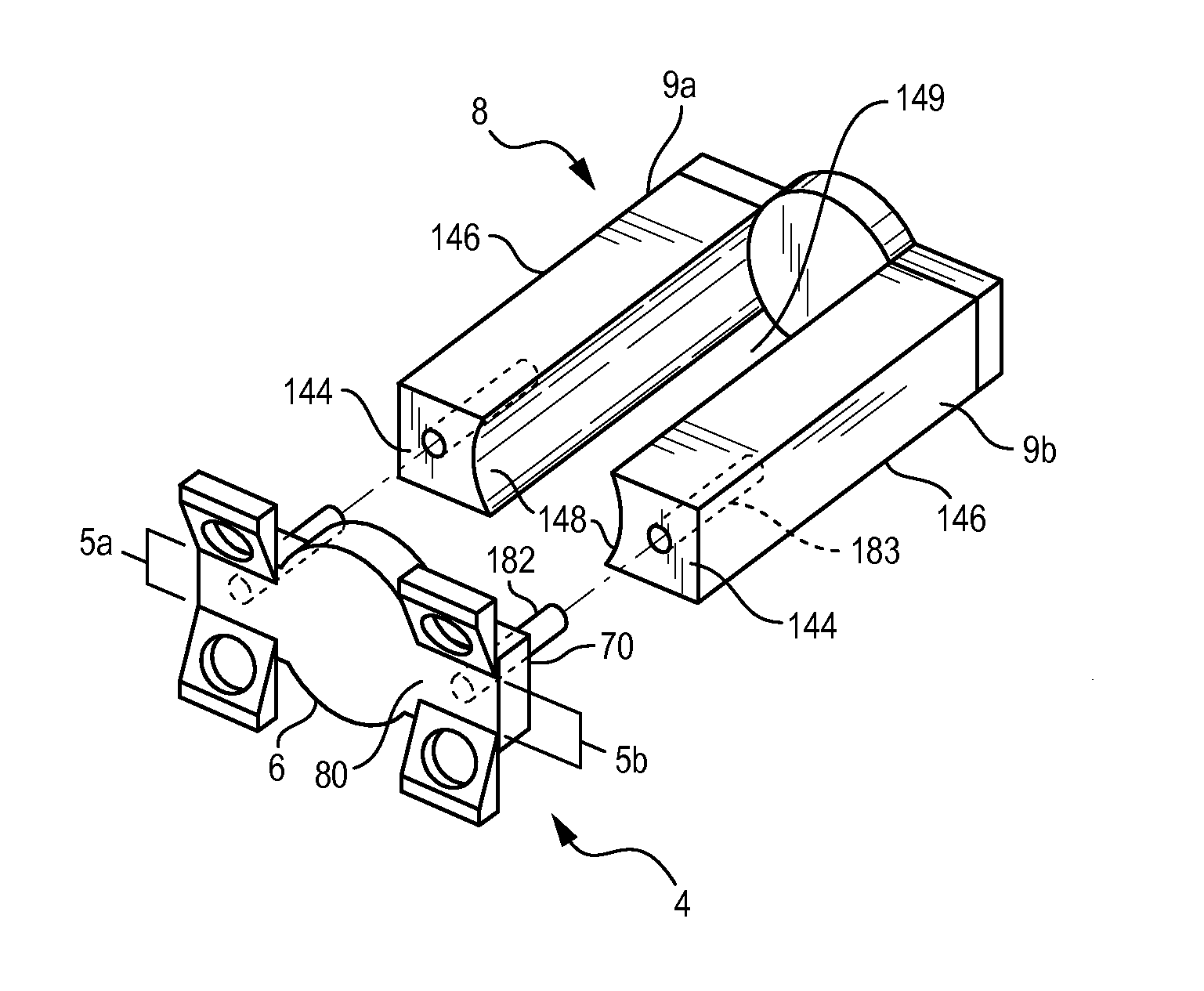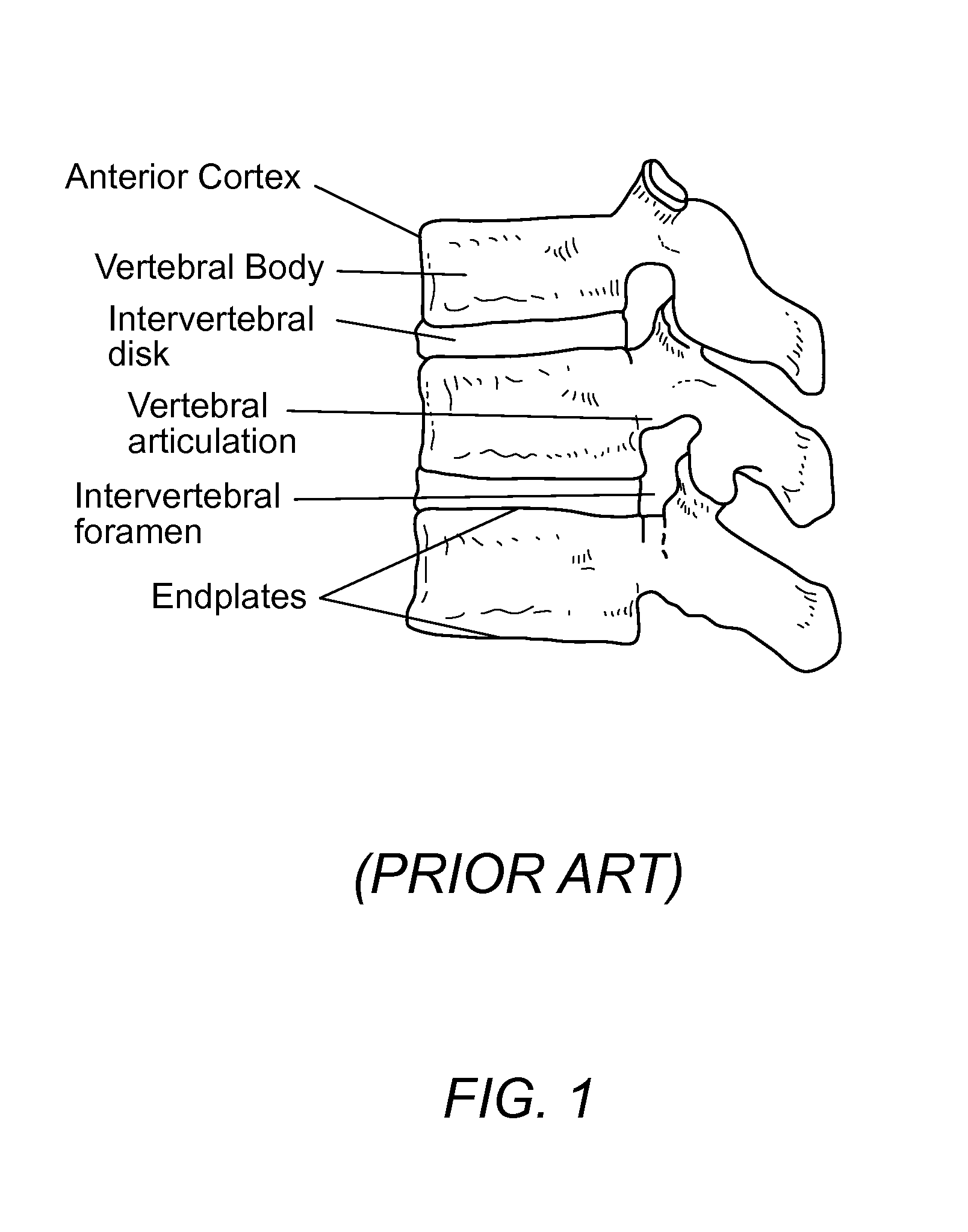Anterior intervertebral spacer and integrated plate assembly and methods of use
an intervertebral spacer and integrated plate technology, applied in the field of sets of intervertebral spacer and integrated plate assemblies, can solve the problems of high subsidence, pain, compression and pain of spinal cord or nerve impingement, and achieve the effect of promoting spine stability and fusion
- Summary
- Abstract
- Description
- Claims
- Application Information
AI Technical Summary
Benefits of technology
Problems solved by technology
Method used
Image
Examples
Embodiment Construction
[0045]Embodiments of the present invention are described below with reference to the above described Figures. It is, however, expressly noted that the present invention is not limited to the embodiments depicted in the Figures, but rather the intention is that modifications that are apparent to the person skilled in the art and equivalents thereof are also included.
Intervertebral Plate-Spacer Assembly
[0046]The following disclosure is for one embodiment exemplified in the figures comprising a plate with a circular middle member and rectangular outer members. And unless stated otherwise, the term “intervertebral plate and spacer assembly”2 as used herein generally relates to spinal implants comprising an H-shaped anterior plate, whether hinged or non-hinged, that is size matched to a hollow U-shaped cylindrical spacer, wherein the spacer may or may not comprise a superior and inferior wall. All Figures herein demonstrate an embodiment of the assembly comprising a spacer that lacks a s...
PUM
 Login to View More
Login to View More Abstract
Description
Claims
Application Information
 Login to View More
Login to View More - R&D
- Intellectual Property
- Life Sciences
- Materials
- Tech Scout
- Unparalleled Data Quality
- Higher Quality Content
- 60% Fewer Hallucinations
Browse by: Latest US Patents, China's latest patents, Technical Efficacy Thesaurus, Application Domain, Technology Topic, Popular Technical Reports.
© 2025 PatSnap. All rights reserved.Legal|Privacy policy|Modern Slavery Act Transparency Statement|Sitemap|About US| Contact US: help@patsnap.com



